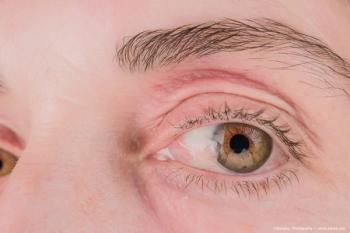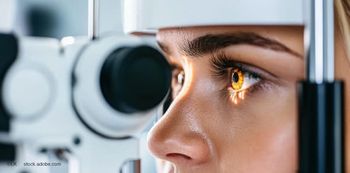
Neighborhood-level social risk factors drive severity of microbial keratitis
Patient characteristics and their area of residence were found to be associated with the severity of microbial keratitis at presentation. Neighborhood-level social risk factors may contribute to health disparities in microbial keratitis, according to Patrice Hicks, PhD, MPH, from the Kellogg Eye Center, Department of Ophthalmology and Visual Sciences, University of Michigan, Ann Arbor.
The authors of this cross-sectional study1 of patients who had been diagnosed with microbial keratitis were studied at the University of Michigan between August 1, 2012, and February 28, 2021. The patient data were obtained from the University of Michigan electronic health record.
The authors wanted to determine if social risk factors were associated with the presenting best-corrected visual acuity (BCVA) in this patient population.
The main outcome and measures were the individual-level characteristics, ie, age, self-reported sex, self-reported race and ethnicity; the presenting logarithm of the minimum angle of resolution (logMAR) BCVA, and neighborhood-level factors, including measures on deprivation, inequity, housing burden, and transportation at the census block group.
The authors identified 2,990 patients (mean age, 48.6 years; 57.6% women) diagnosed with microbial keratitis.
The vast majority of patients (96.5%) were non-Hispanic, and 84.4% were White.
The presenting BCVA was a median (interquartile range) value of 0.40; range, 0.10-1.48) logMAR units (Snellen equivalent, 20/50; range, 20/25-20/600). A total of 1,508 of 2,798 patients (53.9%) presented with a BCVA below 20/40; those patients were older than those who presented with 20/40 or higher (mean difference, 14.7 years; 95% confidence interval [CI], 13.3-16.1; P < .001), the study found.
In addition, more male patients presented with a logMAR BCVA less than 20/40 (difference, 5.2%; 95% CI, 1.5-8.9; P = .04) compared with female patients. The same was true for Black race (difference, 25.7%; 95% CI, 15.0%-36.5%; P < .001) and White race (difference, 22.6%; 95% CI, 13.9%-31.3%; P < .001) compared with Asian race, and non-Hispanic vs Hispanic ethnicity (difference, 14.6%; 95% CI, 4.5%-24.8%; P = .04).
“After adjusting for age, self-reported sex, and self-reported race and ethnicity, the authors found that worse Area Deprivation Index (odds ratio [OR], 1.30/10-unit increase; 95% CI, 1.25-1.35; P < .001), increased segregation (OR, 1.44/0.1-unit increase in segregation by the Theil H index; 95% CI, 1.30-1.61; P < .001), higher percentage of households with no car (OR, 1.25/1 percentage point increase; 95% CI, 1.12-1.40; P = .001), and lower average number of cars/household (OR, 1.56/1 less car; 95% CI, 1.21-2.02; P = .003) were associated with increased odds of presenting with a BCVA worse than 20/40,” the investigators reported.
“The findings of this cross-sectional study suggest that in a sample of patients with microbial keratitis, patient characteristics and where they live were associated with disease severity at presentation. These findings may inform future research on social risk factors and patients with MK,” Hicks and colleagues concluded.
Reference:
Hicks PM, Niziol LM, Newman-Casey PA, et al. Social risk factor associations with presenting visual acuity in patients with microbial keratitis. JAMA Ophthalmol. Published online June 15, 2023. doi:10.1001/jamaophthalmol.2023.2415
Newsletter
Don’t miss out—get Ophthalmology Times updates on the latest clinical advancements and expert interviews, straight to your inbox.













































.png)


